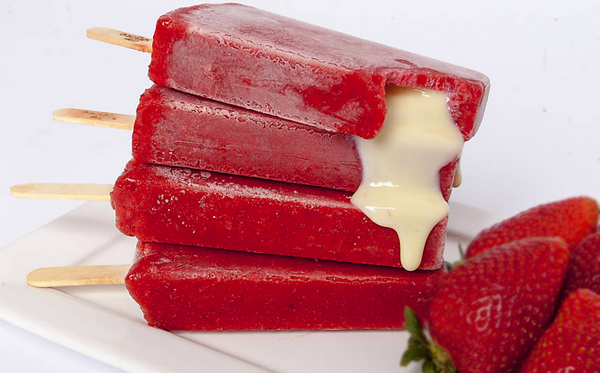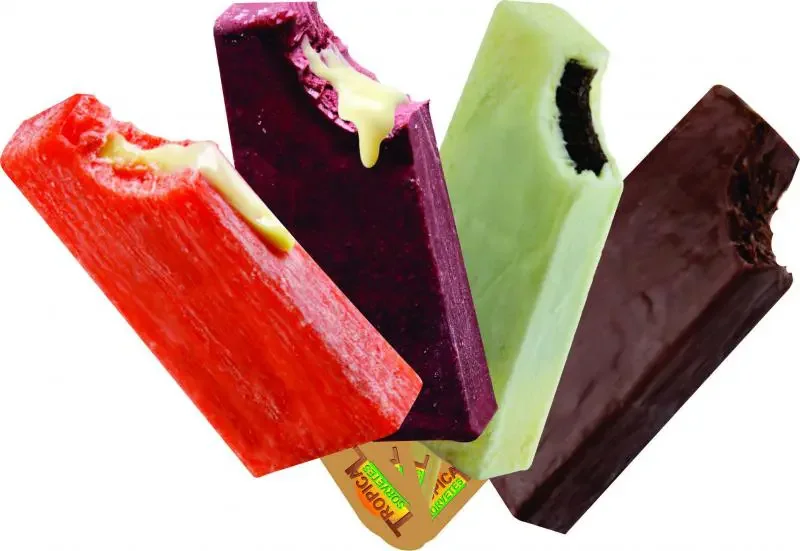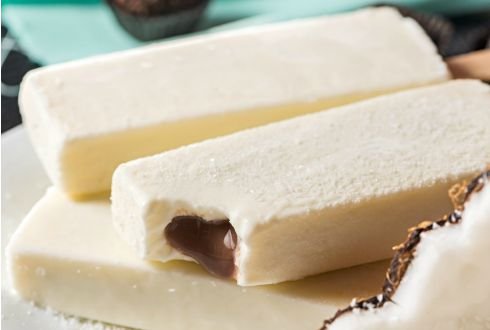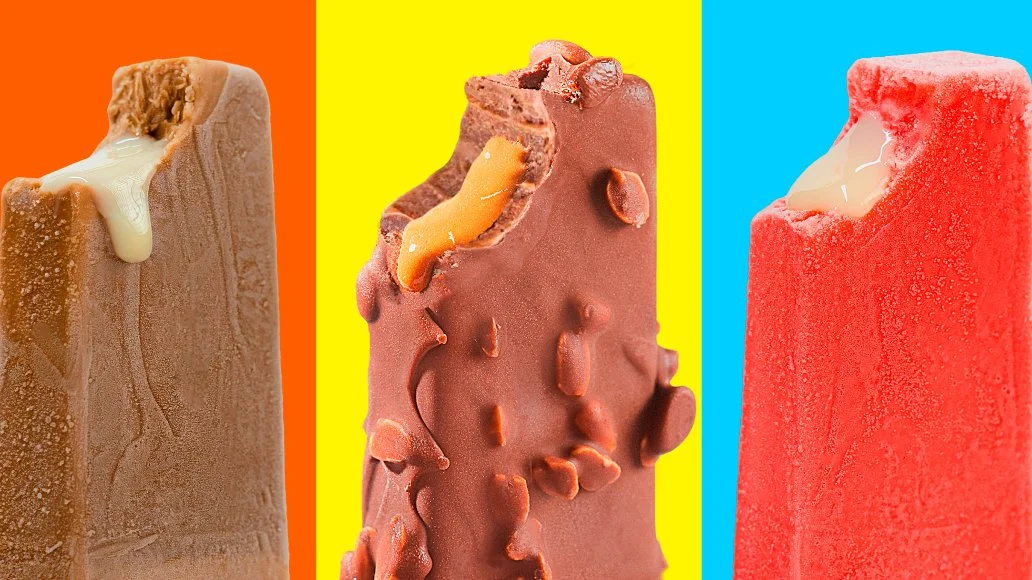Dubai Lolly’s: Business Plan
Executive Summary
Dubai Lolly’s is a Dubai-based luxury dessert startup creating premium tropical ice lollies (popsicles) with fruit bases, indulgent fillings (e.g. pistachio cream, caramel), rich chocolate coatings, and edible gold accents. Each lolly is designed as an Instagram-worthy experience – vibrant, artisanal and exclusive. We will launch via a limited-supply “drop” model and a high-impact pop-up (a mirrored freezer bar in Dubai Mall) to build hype. Distribution combines direct online drops (e.g. via Deliveroo) with influencer seeding and events. Key points include:
Unique Product: Gourmet fruit lollies (e.g. mango-lychee, coconut-passionfruit) with chocolate shells and edible gold leaf. Designed for sensory appeal and social media shareability (akin to Dubai’s viral chocolate trend).
Premium Market: Targets Dubai’s affluent locals, HNWIs and 17.5 million annual tourists who seek novel luxury experiences. The UAE luxury market was USD 4.2B in 2024 (projected to $7.0B by 2033), and Dubai ranks #1 global city destination. In this context, social-media-driven “food tourism” is a $696.5 billion global market.
Launch Strategy: Exclusive pop-up in Dubai Mall (mirrored, experiential) and time-limited online drops (small batches sold out on delivery platforms), creating FOMO. Teaser campaigns with local influencers and media will drive awareness, modeled on successful limited-drop brands.
Financial Outlook: First-year sales are conservative, driven by scarcity marketing. We plan a premium price (around AED30–35 per unit, ~$8–10) with a high gross margin (≈60%). Startup and operating costs (kitchen equipment, sourcing exotic ingredients, marketing) are estimated at $20K–$50K. We project mid double-digit percent net margins (20–25% at maturity, in line with top indie ice-cream shops).
Future Growth: Assuming success, Dubai Lolly’s will expand via international pop-ups (e.g. London, New York, Singapore) and wholesale to premium retailers. Collaborations (e.g. with airlines, hotels or fashion brands) and a permanent flagship store or franchise model could follow. Dubai Lolly’s aims to become a globally recognized luxury frozen dessert brand, similar to how recent Dubai dessert trends have gone worldwide.
Product Concept
Dubai Lolly’s crafts artisanal ice lollies that are as much a sensory indulgence as a visual feast. Each lolly is built on a base of fresh tropical fruit purée (mango, lychee, coconut, etc.) or kompot, encasing a soft center (e.g. pistachio cream, caramel or sabayon) and enrobed in premium European chocolate. The finishing touches are edible decorations – flaked gold leaf, sugared rose petals or branded chocolate shards – that communicate opulence. The result is a photogenic, multi-layered dessert: glossy, richly colored, and texturally complex (crunchy kataifi or nuts against creamy fillings). In short, it looks and tastes “luxury.”
This design intentionally taps into Dubai’s “social-first” dessert culture. As one industry source notes, Dubai-origin desserts are “designed for TikTok and Instagram”. Our lollies leverage that concept: they’re meant to be unwrapped on camera (glinting gold, dripping chocolate) and to evoke an emotional “wow” moment. Indeed, analysts highlight that today’s trend-forward consumers crave shareable, indulgent treats. By using rare ingredients (Asian mango varieties, florals, fine cocoa) and luxury cues (gold, sleek packaging), Dubai Lolly’s positions each product as a mini-luxury fashion item or gift, not just a frozen dessert.
Market Opportunity
Dubai Lolly’s addresses multiple converging trends and markets:
Dubai Tourism Boom: Dubai drew ~17.5 million visitors in 2023, more than pre-pandemic, with each visitor spending ~AED 10,204 (~US$2,775) on average during their trip. Dubai was also ranked the world’s #1 city destination (third year running). Tourism now accounts for ~11–12% of UAE GDP, indicating massive demand for memorable experiences. High-spending tourists – especially from Western Europe and affluent Asian markets – actively seek new foodie adventures.
Luxury Market Growth: The UAE’s luxury sector is expanding (luxury goods market reached ~$4.2B in 2024). Dubai’s reputation for extravagance (skyscrapers, luxury malls) means residents and visitors expect novel premium experiences. Food and beverage is a pillar of Dubai’s hospitality strategy. Our product rides this wave of “foodie tourism” – an $696.5 billion global market (2021) growing at ~17% CAGR.
Social-Media Driven Desserts: Dubai has become a source of viral food trends (e.g. kunafa chocolate bars, pandan croffles). One report shows social chatter about the recent “Dubai chocolate” bar spiked 1259% YoY, illustrating how visual, novel desserts captivate audiences. Younger consumers (millennials/Gen Z) are especially engaged: Dubai-style desserts are trending among Instagram/TikTok foodies. Dubai Lolly’s capitalizes on this “insta-dessert” trend by creating products meant to go viral.
In summary, the market opportunity is large and growing. It spans wealthy locals (UAE has many HNWIs), affluent GCC visitors (from KSA, Oman, etc.), and the international tourist crowd. These customers have high disposable income (luxury spending) and a penchant for new experiences. With the right positioning, Dubai Lolly’s meets strong demand at this intersection of luxury lifestyle and viral food culture.
Competitive Analysis
No direct competitor currently offers an identical luxury popsicle experience, but we note several adjacent players:
Artisanal Popsicle Brands: Local shops like PopCity market gourmet fruit pops using “only the finest ingredients” for health-conscious customers. PopCity operates multiple UAE locations and caters to events, emphasizing natural flavors. However, PopCity’s branding is wholesome/casual (collagen, low-cal pops) rather than high-glamour. Dubai Lolly’s differs by adding lavish elements (gold, chocolate coatings, limited runs) and targeting a luxury segment.
Premium Dessert Makers: Dubai has a range of upmarket dessert and chocolatier brands. For example, Bateel, Locali, and Al Nassma sell gourmet dates and chocolates at luxury price points. In Q1 2025, specialty brands (including Fix Dessert Chocolatier, Locali, I Love Dubai, Bateel, Al Nassma) collectively sold Dh80.4 million of “Dubai chocolate” bars. This demonstrates strong local demand for premium confections. Fix Dessert in particular has pioneered the “limited drops” model: its Dubai kunafa-chocolate bar sells out daily via Deliveroo. Global confectioners are also jumping in: Lindt launched a Dubai-inspired chocolate bar in U.S. markets, and UK chains (Cha Chai, Cake Box) are selling Dubai-style pistachio desserts. While these are chocolate-based, they show the power of the Dubai dessert trend and the competitive buzz around “social dessert” categories.
Ice Cream/Gelato Shops: Upscale ice-cream parlors (e.g. Piccolo Gelato, Glace Craft by Toshi, Twisted Gelato) and gelato bars in Dubai target gourmet tastes. Their focus is premium ingredients and unique flavors, but they serve cups/cones in-store rather than collectible bars. Any dessert shop in Dubai with a luxe image (e.g. concept stores, dessert theatres) could draw some of the target audience. However, most operate on a regular menu model, not the exclusive-drop model.
Key Differentiators: Dubai Lolly’s stands out by combining the novelty and scarcity of limited-edition drops with high-end design. No major player today sells gold-encrusted, influencer-focused ice lollies on a hype cycle. Our main “competition” is therefore any snack or dessert that fights for wallet-share of a luxury-minded youth/celebrity crowd. We will distinguish ourselves through tight supply (avoiding discounting), extreme presentation (mirror-wrapped pop-ups, signature packaging), and storytelling (a brand narrative tying into Dubai’s fusion of tradition and innovation). In practice, we expect guests who love Fix’s sold-out chocolates or pop-up dessert bars to be keen on our lollies as the next evolution of the trend.
Manufacturing & Sourcing Strategy
Dubai Lolly’s requires careful supply chain design to match our premium promise:
Ingredients Sourcing: Tropical fruits (mangoes, passionfruit, lychees, coconuts, etc.) will be imported from Asia to ensure peak ripeness and exotic varieties. The UAE is a major importer of tropical produce, handling fruits like mangoes, avocados and cherries year-round. We will establish relationships with specialty suppliers in Thailand, Vietnam, and India for high-quality, often seasonal yields (e.g. Alphonso mangoes, Thai coconut water). Premium chocolate and nuts will come from Europe/USA. Edible gold leaf (24K) will be sourced from certified suppliers (gold leaf is a known luxury garnish in fine dining). All ingredients will be certified for food safety (Gulf standards) and, where possible, organic or non-GMO to justify the premium positioning.
Co-Packing/Production: We have two manufacturing approaches. Initially, small-scale production can be done in-house (an industrial kitchen with blast freezer) for recipe development and low volumes. For commercial scaling, we will partner with established co-packers. Notably, the UAE already houses large ice-cream manufacturers: Pure Ice Cream Co. (Kwality) is the largest private-label ice-cream maker in the GCC, and it is expanding capacity (a new $80m, 50-million-liter plant opening 2026). We will explore contract manufacturing with such F&B facilities to ensure consistent quality and food-safety compliance. (As a precedent, U.S. co-packer Brothers Desserts advertises “ultra-premium ice cream” and full co-packing services) Outsourcing ice lolly moulding and packaging to a co-packer minimizes CapEx and allows focus on branding.
Logistics: Finished products will be stored at −18°C or colder. We will use biodegradable/compostable packaging (aligned with Dubai’s sustainability goals), with elegant branding (e.g. foil-stamped boxes or velvet ribbons). Local cold-chain partners (like those used by premium caterers) will handle deliveries to pop-ups and hub kitchens. Emphasis will be on on-demand production – we will not stockpile much inventory, since melts / freezer burn are issues. Instead, we forecast daily demand for each drop and schedule just-in-time production.
By leveraging Dubai’s role as a food manufacturing hub (Dubai Industrial City alone hosts 1,100+ F&B factories) and its logistics connectivity (major ports and airports), Dubai Lolly’s can maintain a reliable, high-quality supply.
Brand Positioning & Customer Experience
Dubai Lolly’s is positioned as ultra-luxe and aspirational. Our brand identity blends Dubai’s glamour with dessert artistry: think high fashion meets frozen treat. Key elements:
Luxury Status Symbol: The brand narrative is “treat yourself to the extraordinary.” We will treat each lolly as a coveted limited-edition accessory. (This mirrors how Last Crumb positioned its cookies: as a “luxury status symbol” on par with fine wines or fashion) Each flavor drop will have a name/theme (e.g. “Golden Oasis” or “Pearl of Bangkok”) and a compelling story (e.g. sourced from a 100-year-old mango orchard).
Packaging & Presentation: Every touchpoint screams premium. Lollies will be individually wrapped in custom-dyed, foil-lined sleeves, placed in a rigid gift box with padding. The box might feature a serial number or limited-edition stamp (like Last Crumb’s unique cookie bags). Unboxing is an experience: customers will see the mirroring logo, a leaflet about the flavor, and an Instagram frame cutout printed inside the lid. We’ll even brand the delivery box (akin to Last Crumb’s over-the-top shipper) so posting about it online feels special.
In-Person Experience: The pop-up freezer bar will be a mini-installation: mirrored walls/ceiling (infinite sparkle effect), accent lighting (cool blue/neon), and a luxe counter. Staff (wearing sleek uniforms) will hand each customer the chill treats on a gold-rimmed tray or branded parchment. The freezer itself could have a digital “selfie mirror” front. Music (upbeat lounge) and subtle scent (perhaps vanilla or sandalwood) will complete the ambience. This immersive design encourages in-person guests to take photos and livestream.
Target Customers: We target experience seekers: Dubai’s socialites, fashion-conscious millennials, and foodie influencers. These customers value exclusivity. For example, Last Crumb cultivated a 200,000-person waitlist by selling out every drop. We will cultivate a similar sense of urgency – early supporters will get into a VIP circle (possibly via newsletter sign-ups) granting them first-access to new drops. Our tone of voice will be bold and playful (with a dash of Arabic flair), positioning the brand as both aspirational and slightly rebellious (e.g. “Ice Sultans”, “Gold Standard Indulgence”).
By treating dessert as a lifestyle (not just food), Dubai Lolly’s aims to become a talked-about brand. Every interaction – from the mirror-polished pop-up to the first bite – is crafted to astonish, creating word-of-mouth and press coverage.
Go-to-Market Plan
Launch Pop-Up Event (Dubai Mall): Debut Dubai Lolly’s with a 1–2 week pop-up at Dubai Mall (e.g. near the Ice Rink or Fashion Avenue). This high-traffic, tourist-laden venue will feature our mirrored freezer bar. We’ll invite press and local celebrities to the opening night, offering complimentary lollies and photo ops. Social media teasers (“coming soon” signage, countdown stories) will build anticipation. On launch day, we’ll host a ribbon-cutting with influencers livestreaming their first taste.
Limited “Flavor Drops” on Delivery Platforms: Parallel to the pop-up, we will sell through delivery apps (Deliveroo, Talabat). Inventory will be released in small batches (e.g. 500 bars twice daily as a pilot). Customers must sign up on our website for drop alerts. By keeping daily supply low and inconsistent, we generate FOMO. Sales are prepaid (no refunds), so we minimize waste. Each drop features 2–3 exclusive flavors – for example, “Mango Sohni” one day and “Passion Lotus” the next. Sold-out notifications and live “drop clocks” on our app will amplify hype.
Influencer & PR Seeding: We will send early sample boxes to top Dubai food/influencer accounts (e.g. @x, @y) and global dessert influencers. Unique personalized codes could be included for social contests (e.g. “Share your reaction to win a free box”). Local food writers and lifestyle media (Gulf News, Khaleej Times) will be pitched the story of our launch. We’ll also partner with Dubai tourism boards and hotels (e.g. have Dubai Lolly’s included in a “city-pass” foodie package).
Online Presence & Reservations: Our website and Instagram will carry the brand identity. The site includes an email sign-up for future drops, and we may build a waitlist for new flavors (echoing Last Crumb’s 200K waitlist success). We’ll also offer a “Lolly Club” membership for first access to each limited release. Over time, we can open an online store for merchandise (branded coolers, apparel) once the brand is established.
Throughout, the key is to mimic a fashion brand launch more than a typical food debut. Every flavor release is an “event,” accompanied by countdown graphics and influencer features. This strategy – pioneered by brands like Fix and Last Crumb – creates urgency: customers learn they “have to be quick” to buy.
Marketing & Social Media Strategy
Our marketing will be digital-first, visual-heavy and influencer-driven:
Instagram: We will use Instagram as the main showcase. High-quality photos and short Reels will highlight the lollies’ colors, textures, and the gold leaf gleam. Example content: slow-motion shots of chocolate cracking, behind-the-scenes of pouring mold with gold, customers unwrapping a lolly. Instagram Reels and Stories will be used for behind-the-scenes content: the freezing process, staff memes, and Q&As. We will run targeted Instagram ads to affluent Dubai audiences and tourists (leveraging location and interest targeting). Collaborations with local food influencers (e.g. feeding them at launch) will extend our reach.
TikTok: Short TikTok videos will capitalize on viral trends. We’ll create branded hashtags (e.g. #DubaiLollys) and encourage user videos (“show us your first bite”). TikTok strategies include participating in trending challenges (possibly inventing one, like #GoldenLollyChallenge), and posting humorous or ASMR-style content. Influencers will be invited to film their genuine reactions (“surprised girl vs green screen jokes”). According to industry advice, TikTok’s short videos and influencer partnerships are “game-changers” in the UAE market. The goal is organic shares of the decadence to a global audience.
Cross-Platform Engagement: We’ll also maintain a presence on Facebook (for paid campaigns) and YouTube Shorts (compilation of reactions). We will claim our Google Business/TripAdvisor page as we expand physical locations to build credibility. Occasional press releases about milestones (e.g. “20,000 lollies sold in 2 months” or charity events) will be sent to local F&B press.
Content Partnerships: Collaborations with nearby luxury brands (e.g. freebie with a purchase at a fashion boutique, or a dessert pairing at a 5-star hotel’s lounge) will be explored. For example, a “Dubai Lolly’s cocktail” could feature at rooftop bars. Each partnership mention includes social tags to widen our audience.
Paid Advertising: In addition to organic buzz, we’ll allocate budget to social ads during key periods (launch week, holiday seasons). This may include short video ads on Instagram/TikTok showing the product in use, and geo-targeted ads in Dubai Mall when the pop-up is live.
The overarching theme is to build visual word-of-mouth. As one marketing analysis notes: these Dubai-inspired desserts are “craveable, shareable, and instantly recognizable”. Our campaigns will lean into that, making the lollies as much a piece of content as a product.
Financial Model Assumptions
We project a lean, high-margin financial profile:
Revenue: We expect to sell lollies at ≈AED30–35 each (about US$8–9). In Year 1, with limited batches, forecast ~15,000–20,000 units sold (ramp-up from launch to Q4) for roughly AED 450k–600k (~US$120k–160k) in sales. (If each drop is ~500 pops at AED30, twice daily, that’s ~30k AED/day on sellout days.) Year 2, with brand momentum, volumes could double or triple as we add outlets or days. By comparison, independent ice cream shops in mature markets average USD$20k–50k revenue per month; our model skews lower-volume but higher-price.
Cost of Goods Sold (COGS): Ingredients (fresh fruit, chocolate, fillings, gold leaf, packaging) are ~50–60% of retail price. The edible gold and premium chocolate raise COGS above a normal popsicle. We target a gross margin ~40–50% (meaning 50–60% COGS).
Operating Expenses: Major expenses include labor (staff to make and sell lollies), rent/fees for pop-ups, delivery commissions (e.g. ~25% per order on Deliveroo), marketing, and equipment depreciation. We expect operating margins around 15–20% once scaled. (This aligns with the top of the 15–25% profit margins seen in independent ice cream shops, noting our product’s novelty can support a premium.) We will keep fixed costs lean by using pop-up leases (short-term) and outsourcing production.
Pricing and Packages: In addition to single lollies, we may sell gift boxes (6–12 pops) at a slight per-unit premium. Corporate/event orders (wedding favors, hotel minibars) could add higher-margin revenue.
Startup Costs: We estimate initial investment of US$20K–50K to cover commercial freezers, molds, food prep equipment, a website & app, and initial marketing. These fit industry norms (equipment and supplies can total ~$20–50K). We plan to bootstrap these costs and seek small business funding/angel investment if needed.
Break-even & Profit: With the above assumptions, we anticipate breaking even in the first 12–18 months (driven by rapid sell-outs and lean overhead). A simplified pro forma for Year 1 might show net profit around 10–15% of sales (after all costs), with ramp-up towards 20%+ in Year 2 as brand awareness grows. Given the scarce supply model, cash flow is relatively quick (prepaid orders).
In summary, Dubai Lolly’s finances on fewer transactions but higher margins. The key is to drive outsized revenue through pricing and volume bursts, rather than constant low-margin sales. Our financial targets are modest in absolute terms but robust in margin, which is attractive to early investors.
Future Growth Plan
Once Dubai Lolly’s is established locally, we will aggressively expand into new markets and channels:
International Pop-Ups: Dubai-style novelty has global appeal (as seen by the spread of Dubai-inspired desserts). We plan pop-up freezer bars in cities like Abu Dhabi, Doha, Riyadh, and internationally in Hong Kong, London or New York (locations with luxury shoppers). These pop-ups will be branded “Dubai Lolly’s, in [City]” and similarly leverage local influencers to generate buzz.
Permanent Locations: After testing the concept, we may open a permanent store/café in Dubai (e.g. in City Walk or Mall of the Emirates) for year-round sales. This location can also sell merchandise and serve as an R&D/experience center. Ultimately, we could consider franchising the café model in select markets (similar to how Fix Chocolate is now at Jumeirah hotels).
Wholesale & Retail: We will explore selling through luxury retailers and hotels. For example, our lollies could be stocked in hotel minibars (for high-paying guests) or in gourmet grocers (in special freezer sections). The success of Dubai chocolate at Duty Free suggests a runway: pure-to-confectionary brands exporting to 20+ countries. We might partner with travel retailers (airports, cruise lines) to feature our best-selling flavors as exclusive treats.
New Product Lines: Beyond popsicles, the core brand could extend to related products: “Lolly-inspired” ice cream tubs, festive holiday special editions (e.g. saffron and pistachio for Eid), or even chocolate bars with our signature fillings. We can also do seasonal collaborations (e.g. a summer “Lolly x L’Artisan du Chocolat” line).
Technology & Digital: We will continue building our online presence. For instance, a luxury subscription box (four exclusive lollies delivered quarterly) could target overseas Dubai fans. If successful, a small DTC export model might ship frozen lollies internationally using specialty couriers.
Brand Extensions: Long term, Dubai Lolly’s could license its brand for lifestyle products (e.g. a line of freeze pops with allied partners). We could also co-brand with airlines (business class dessert), or even launch a “Lolly Bar” franchise model in resorts.
Throughout expansion, we will maintain the same limited-supply, drop-driven ethos. Each new market entry will be treated as a major launch, often via pop-up or exclusive event, to replicate the hype cycle. This gradual, event-based growth ensures Dubai Lolly’s remains a coveted brand rather than becoming ubiquitous.
Conclusion: Dubai Lolly’s combines proven luxury-food dynamics with Dubai’s unique appetite for spectacle. Our strategy leans on proven tactics (social virality, scarcity drops) while creating an entirely new product category. With strong market tailwinds (tourism, F&B growth) and a clear brand vision, we offer investors a unique opportunity to back a gourmet concept poised to “go viral” and scale internationally.





